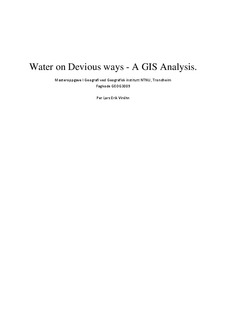| dc.description.abstract | Flood events are after storm the most damaging natural hazard in Norway. As a result of global warming, it is anticipated that heavy rain will fall more often and with more intensity in the future which may lead to more flooding (NIFS 2014). Anticipated flood events are however not only a result of climate change alone. Combined with more densely populated urban areas there is a larger share of impermeable surfaces, which prohibit water to dissipate to the ground and instead result in surface water which lead to an increase in damage on properties, infrastructure and farmland. Flood that occurs after precipitation of high intensity resulting in a high amount of surface water in small watersheds, so called flash floods, happens suddenly and are therefore difficult to foresee and alarm. The flood in Gudbrandsdalen during spring 2013 is an example of a flash flood. The flood event was larger than the amount of precipitation should call for and resulted in devastating damages on both buildings and infrastructure, such as roads and railways. The reason for the damages was most likely that the naturally water paths were blocked by sediments and debris, and the water was forced to follow other paths with erosion as a result.
If we are able to predict where the surface runoff water will flow, we will also know which areas that is likely to be exposed after intense rain fall events. For these exposed areas one should restrict physical development and along the water paths, one would have a better basis for the dimensioning of the drainage system. This study examines three study areas in Gudbrandsdalen where the flood occurred in 2013. The aim is to identify where the runoff will flow in small catchments using a GIS. Points of damage are used to validate the model.
The study has shown that hydrological modeling gives a view of possible flood streams. It is studied different paths the water might flow if the culverts are blocked. Using available information about damages after the flood, some flood streams are validated. In small developed areas with few culverts this is relatively easy, and gives a good picture of the culverts that may have been closed during the flood. In more complex areas with many different combinations of open and filled culverts it requires much data to validate the flood streams. | nb_NO |
